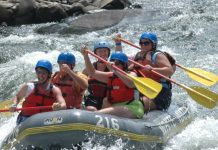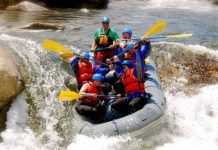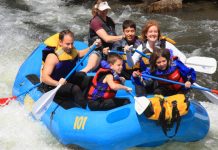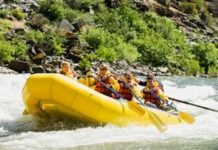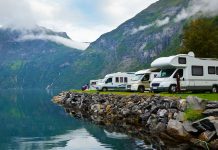White water rafting is one of the challenging recreational sports, where you have to use a raft and navigate the torrential river water. The right equipment can make the activity extremely adventurous.
One of the essentials among all is the neoprene suit that needs to be compulsorily worn as it keeps you dry. The other important item that you need while doing white rafting is the right footwear that is the paddling booties which keep your feet warm and give proper protection. Besides these, the other essential equipments that are needed for white water rafting are mentioned below.
Helmet
During this adventure sport, people tend to hit the rocks and due to this, the head needs to be protected with a helmet. This will reduce the risks associated with such accidents. The helmet needs to be comfortable and has to mainly protect the temple and the scruff. It is important that you chose the right size of helmet so that it fits you perfectly.
Lifejacket
This is very important equipment that you should carry during your rafting trip. The lifejacket needs to be of the right size and in accordance to your weight. The color needs to be heightened so that you are easily noticed. This will also help in protecting against various injuries.
Boat
Right boat is definitely on the priority when it comes to rafting essentials. The rafts are mainly available in two types. The common one is the symmetrical raft, where up to 12 people can fit in and the other one is the inline raft, wherein up to 3 people can fit in. The boat should also include a space for the guide who will be there with you on the trip.
Paddle
Paddle makes the boat move and this is also an important equipment to be considered for safety purpose. The paddles are made up of hard material as they will keep you away from stones or any other kind of obstacles.
Besides the above given, some of the other essential items include a throw bag which is used in the conditions when a person falls from the raft and a rope needs to be thrown at him to save him, first aid kit for emergency and others.
Thus by considering the above given essentials, you can enjoy your white water rafting trip in safe manner.
Photo Credit By: riverriders.com


